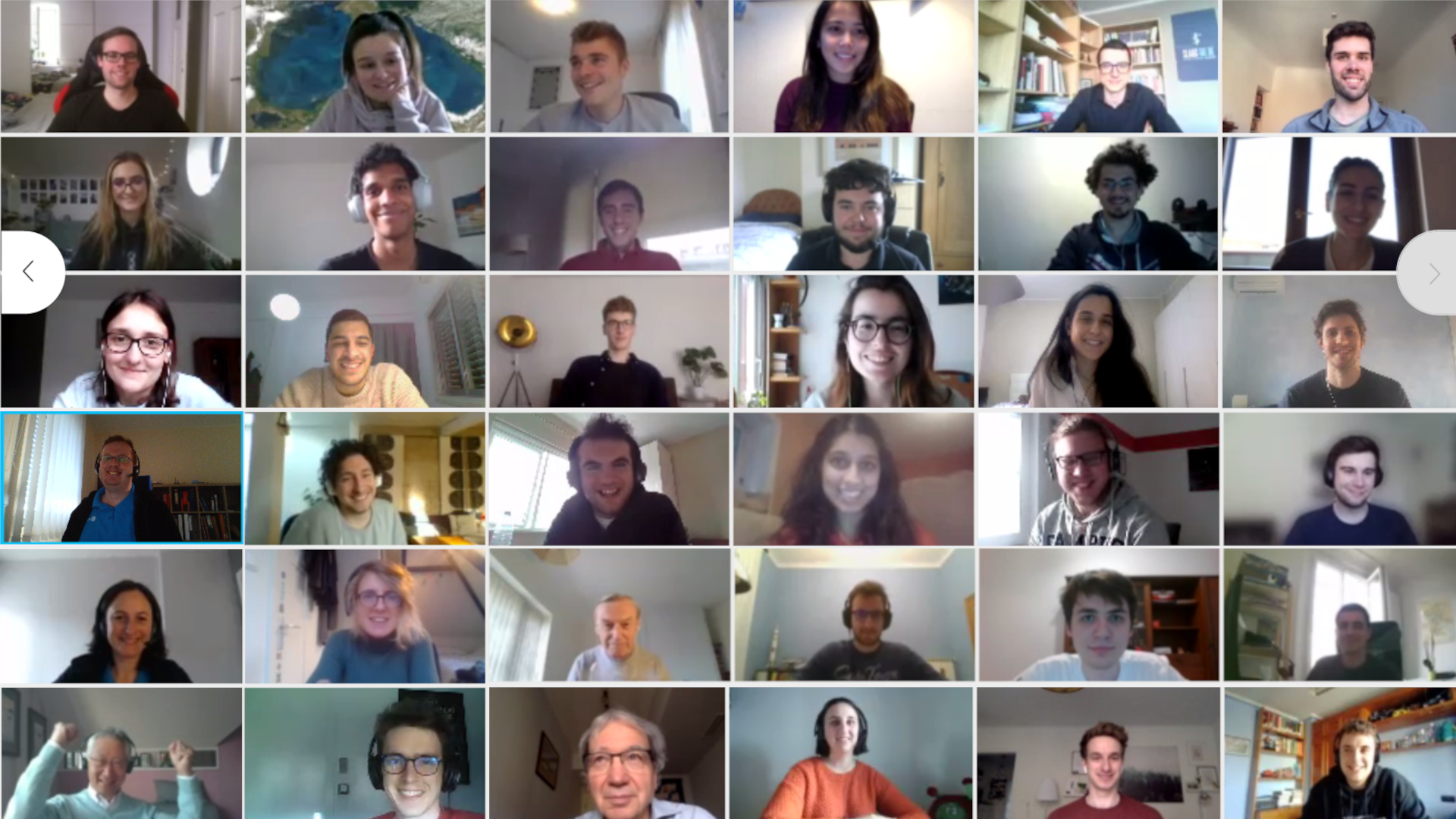Online Earth Observation Satellite System Design Training Course 2021 successfully concludes
From 22 March to 2 April 2021, 30 university students from 13 different ESA Member States and Canada participated in the first online edition of ESA Academy’s Earth Observation Satellite System Design Training Course. Every afternoon, the students went through the whole design and development cycle of Earth Observation (EO) satellite systems in collaboration with ARES, the Association of Retired ESA Staff.
An important part of the training course throughout the two weeks was to let the students design a next generation Copernicus ocean observation system step-by-step, specifically the ‘Sentinel-3 Next Generation’ consisting of a pair of satellites, carrying altimetry and optical payloads, respectively.
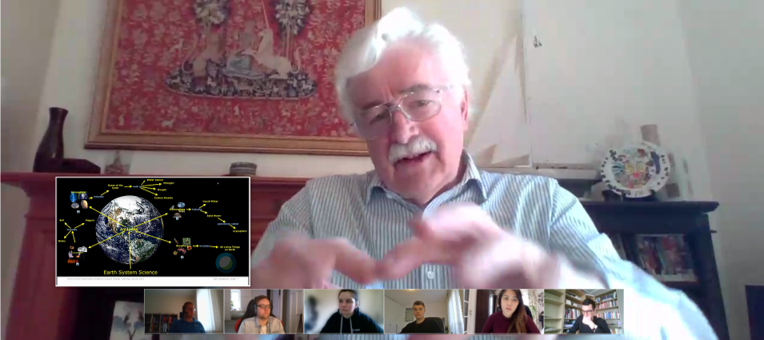
“We have expanded and improved the lectures as well as the conduct of the group project as compared to the pilot 2018 edition. The major challenge for us was to create an effective teamwork in an online environment, with the student groups on one hand, and the trainers on the other hand, all connected ‘live’ through advanced video-conferencing and chat facilities,” explained one of the organizers.
After the welcome and introduction session to the course, an inspiring overview of Earth observation satellite systems and an introductory lecture on remote sensing methods marked the real start of the training course.
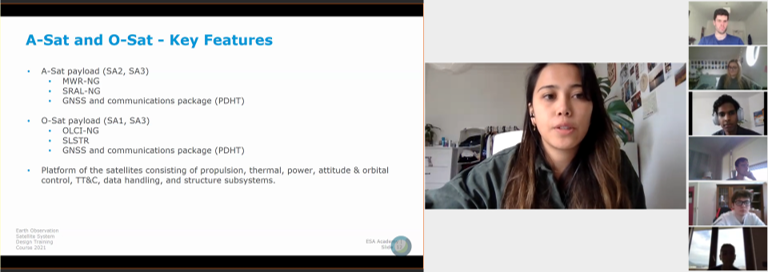
The following day, the students were taught the importance of starting with observation requirements as defined by users, and the methodology to derive system/engineering requirements. The various possible orbits and launchers for EO missions were also discussed, followed by the first group project session on orbit selection. Making use of ESA’s SamiEdit and ESOV orbit simulation tools, the students learned to understand the mission parameters that drive the selection of the orbit.
Since the first group project session, the students were divided in project teams where each student within a team was in charge of a given engineering field.
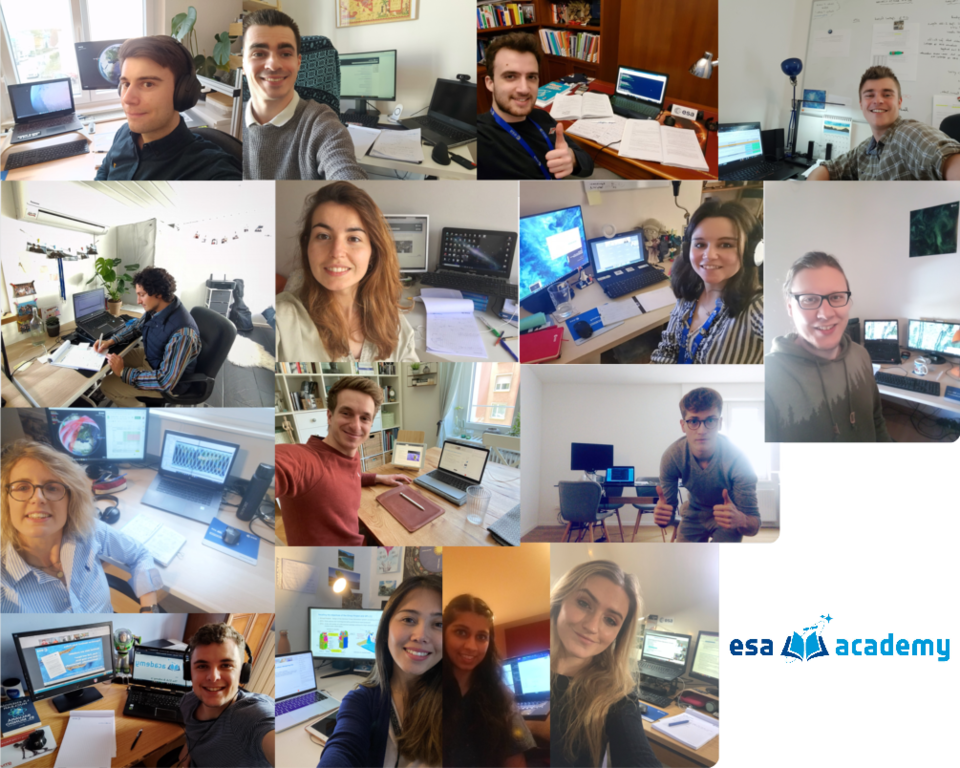
Before the second group project session began, in which they had to design the microwave instruments on board the altimetry satellite, the students enjoyed successive lectures on microwave remote sensing instrumentation, starting with the electromagnetic wave theory, then progressing to the principles of radars and radiometers for quantitative Earth remote sensing.
To close out the first week, their last topic was optical instrumentation. Lectures on basic space optics and optical payloads provided the students with the crucial information to be able to design the ocean colour instrument for the optical satellite during the third group project session.
“I love how the lectures complemented perfectly our project and how the experts were all very motivated and involved in the project. It was obvious that everyone involved spent a great effort to help the students to learn as much as possible in this limited time period,” says a Swiss student from Ecole Polytechnique Fédérale de Lausanne (EPFL).
There were no signs of slowing down, as the second week got underway with a lecture on risk management and technology development, followed by detailed explanations on how EO satellites are designed and their payloads accommodated. Throughout this week, the students also discovered how satellite components and equipment are assembled, integrated and verified (AIV) by tests, in addition to gaining detailed insights into the launch campaigns, in-orbit verification as well as ground segment design and operations concepts.
The work of designing the Sentinel-3 Next Generation intensified in this second week. The end-to-end system concept elaboration included the space segment design, interface specifications, ground segment design and the operations concept definition. Students’ tasks consisted of several steps, ranging from e.g. calculations of mass, power and data rate budgets to figuring out how their satellites would fit into the launcher fairing.
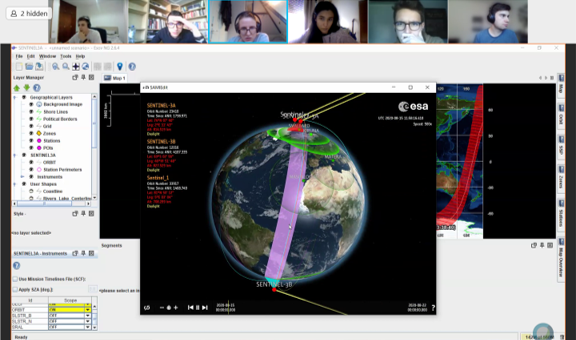
The final day was dedicated to presenting the outcome of the group projects to the ESA and ARES experts. All teams worked hard on their projects and presented their results to the trainers, who were positively impressed by the high quality of the achieved system definitions. The students successfully demonstrated their abilities to apply their acquired knowledge into the design of an EO system.
“The whole course was an engaging, challenging, and rewarding group experience that taught me a lot about end-to-end architecture of past, current and future EO space missions while providing many interesting insights about all their different aspects given by passionate experts. A fantastic experience guaranteed to leave attendees with deeper knowledge of the topics covered and also with many fun moments to be lived with fellow students from all over Europe and beyond!" remarkedt course an Italian student from the University of Naples, Federico II.
Upon completion of the course, the student teams were evaluated on the basis of their team work and respective satellite design. They were provided with a course transcript that, along with their certificate of participation, may enable them to gain ECTS credit(s) from their respective universities.
To find more information about upcoming ESA Academy training opportunities, please check the current opportunities page.
Contact: tlp@esa.int


